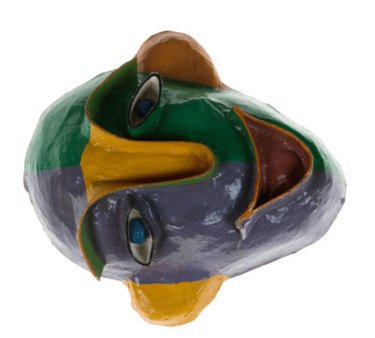Things You'll Need
Cyanoacrylate adhesive
Silicone glue
Five-minute epoxy
Disposable mixing dish
Wooden craft stick
Toothpick

When it comes to crafts and repairs, there are three kinds of items that are difficult to glue: heavy things, hard things and non-porous things. Ceramics and metal fit into all three categories, so when you want to join them together, you need not only a strong glue, but the appropriate method of using it. Choose your glue based on your project and the results you want for the items you are gluing together.
Cyanoacrylate Adhesive
Step 1
Bend the metal to fit the ceramic piece if possible. Cyanoacrylate works best on materials that are flat or fit together with a large amount of surface area touching.
Video of the Day
Step 2
Apply a small dot of glue to one of the surfaces using the bottle's applicator tip. Use as little glue as you possibly can to cover the area that needs to be attached; spread it using the applicator tip, but do not touch it with your finger or a brush. Do not let the glue pool and bubble; this glue is most effective when you use a small amount, since it becomes brittle when dry.
Step 3
Press the surfaces together. Hold firmly in place for one minute.
Step 4
Let the glue cure according to the manufacturer's instructions.
Silicone Glue
Step 1
Wash and dry both the metal and ceramic surfaces thoroughly. Leave no trace of water on either item; if water mixes with silicone glue it will weaken the bond. (Note: Silicone glue works best when you want a strong, but highly flexible hold between the objects.)
Step 2
Apply silicone glue to the surface of one of the items. Apply directly from the bottle or use a craft stick or similar tool. Use enough glue to cover the surface and spread with a tool or your finger; the quantity of glue used will affect only how the finished object looks but not the strength of the hold.
Step 3
Press the items together. Use a knife or metal tool to scrape away any excess glue that oozes out.
Step 4
Prop or clamp the items together or secure them with painter's tape until the glue cures.
Step 5
Let the glue cure for 24 hours before stressing the seal. When cured, the silicone will be quite flexible, but still have a secure hold.
Five-minute Epoxy
Step 1
Mix equal parts of the two epoxy solutions in a disposable container using a disposable stir stick such as a toothpick. Stir the two solutions together until the mixture becomes slightly cloudy. (Note: Use epoxy when you want an inflexible hold on the objects, but they don't fit together perfectly.)
Step 2
Apply the epoxy to one of the objects using a toothpick or craft stick. Use as much as you want to, but bear in mind that it will be difficult to remove excess glue, but easy to add more before the epoxy sets. Press the two items together.
Step 3
Hold the items clamped firmly together for five minutes.
Step 4
Let the epoxy cure according to manufacturer's instructions. When cured, the epoxy will have a firm, inflexible hold.
Video of the Day